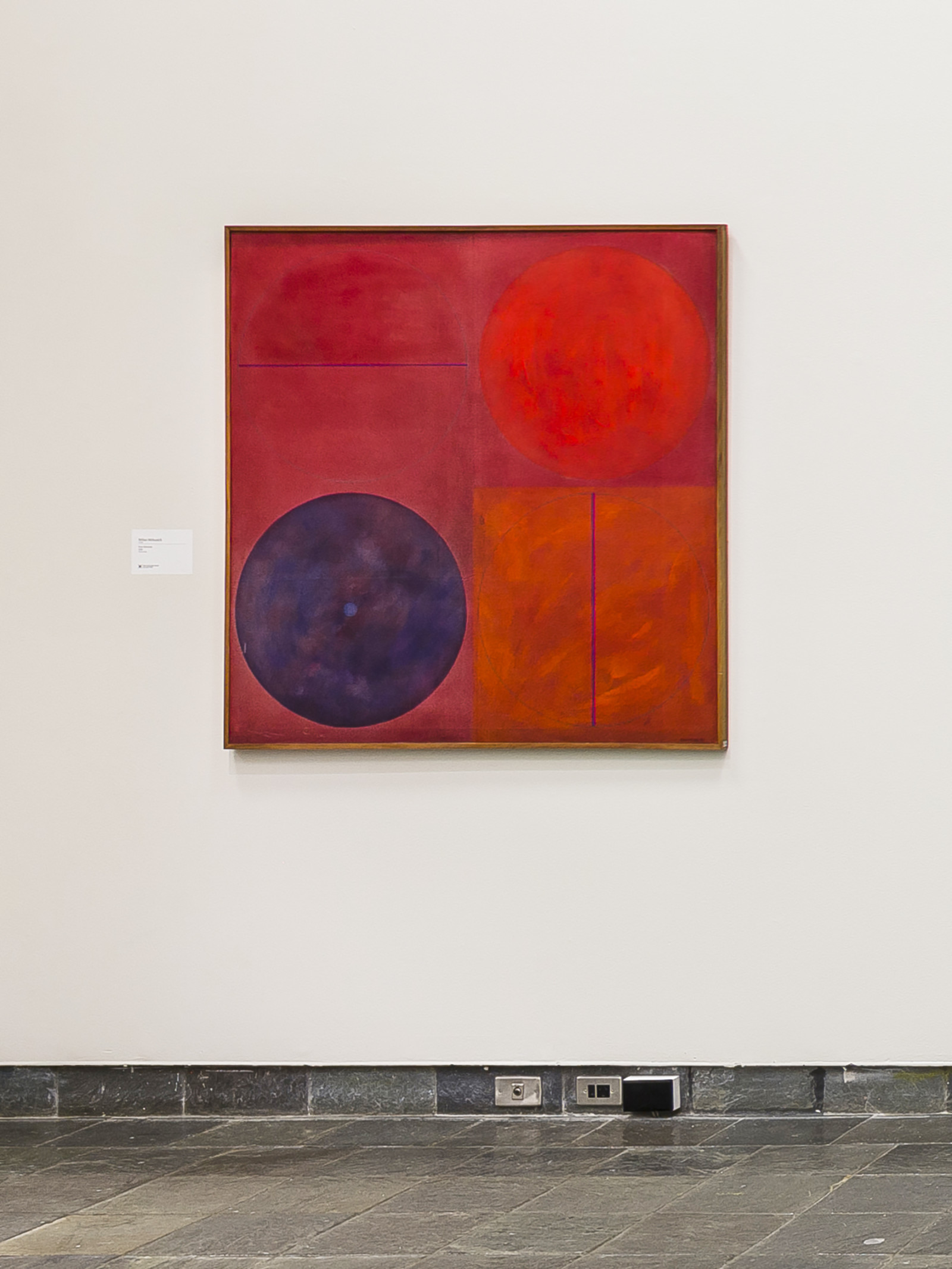MRKUSICH, Milan;
Four Elements
1965
Oil on canvas
1210 x 1165mm

Milan Mrkusich began his Elements series in 1965, unifying them with a common theme that may be simply expressed as the combination of square and circle to suggest harmony. This is achieved either by enclosing the circle within a square or the square within a circle. The motivating experience for this compositional structure was the artist’s reading of the psychologist Carl Jung’s Man and His Symbols (1964), in which the symbolism of square and circle was discussed.
Because of their geometrical structure, the Elements are conceived two-dimensionally and frontally. One colour tends to dominate each work, while others are subordinated to give contrast. The colours are generally translucent and smoothly applied, allowing the texture of the underlying canvas to be clearly read by the viewer.
Often, circles are bisected—vertically to convey the idea of activity, horizontally to convey passivity. The vertical aspires to the spiritual while the horizontal is earthbound; these are opposed forces with elemental significance. The straight lines contrast with the circles. The bisections are drawn in a colour that complements the square or circle divided. Harmony is thus momentarily disrupted.
Although most of the Elements were painted in 1965, the series did not end with the year; a continuation took place in 1966, while others were painted in 1968 and 1970. In later works, the circles do not relate to the square field but appear to float on a rectangular ground. One of these later works, Four Elements Dark, won the merit award at the International Young Artists’ Biennale in Tokyo in 1969.
It is interesting to compare Four Elements with Kura Te Waru-Rewiri’s The Elements, another work that speaks to the tradition of formal abstraction and explores notions of the elemental.
